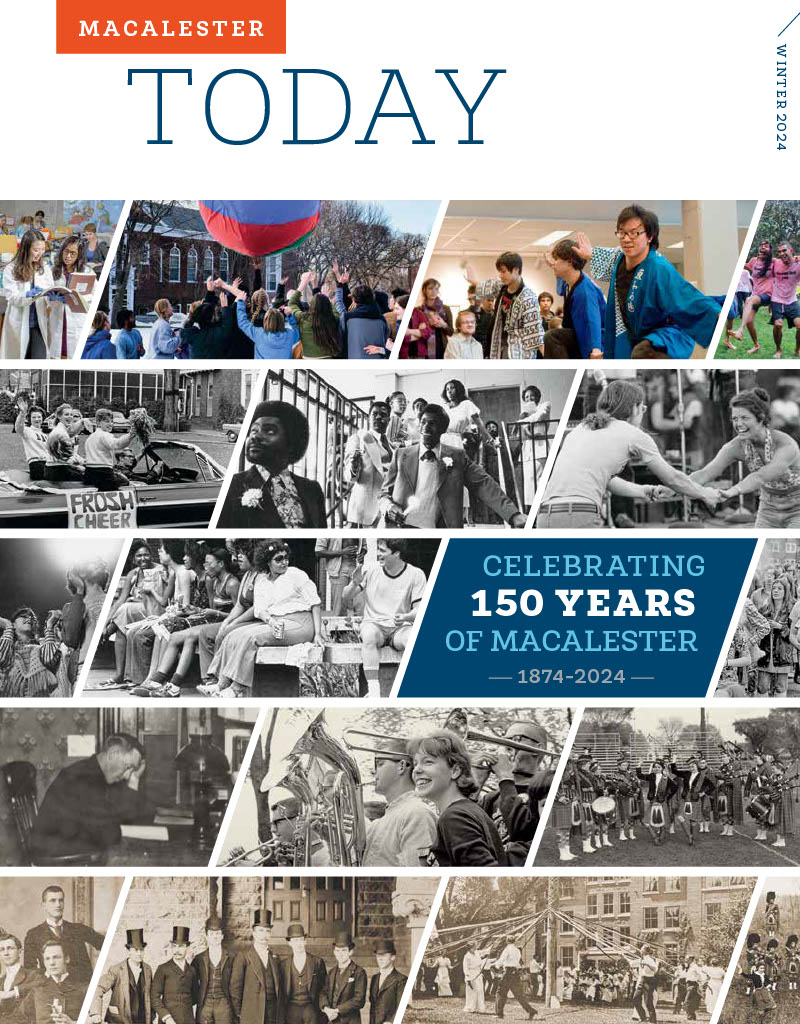
By Joe Linstroth
Language and music are inextricably linked. Both rely on sounds or signs and culturally specific practices, and both are used to communicate and convey social meaning.
Language and music also morph in complex ways when they interact with each other. How is music interpreted in sign languages, for example? What happens to hip-hop when it’s created in different languages?
These are just some of the questions Dr. Morgan Sleeper ’11, a professor of linguistics, and his students explore in his class “Language and Music.”
In what key ways are language and music connected?
In class, we look at this question in four different ways. One is the idea of “music in language,” or the musical elements that we find in language—things like pitch, rhythm, cadence, and melody.
Another area is “music as language.” What does it mean to say music and what does it mean to say language? In some ways that’s obvious. If you’re having a conversation in your kitchen, maybe that’s language, and if you’re on stage performing at a concert, maybe that’s music. But we have a lot of things that are in between. What happens if you are walking down the road singing and talking to yourself?
We also look at the confluence of what we talk about as “language about music.” How do people talk about music in an evaluative sense, but also how do people teach music, interact with music, and create their identities when talking about music?
The area we spend the most class time on is the idea of “language in music.” What does music change about language, and vice-versa, when they interact? If we’re speaking a language versus singing it, how might it change?
How do music and sign languages interact?
First, there is a misconception that all people who are deaf are not interested in music. Many people who are deaf can hear aural music in a lot of ways. But when music interacts with sign languages, it really blows up what we think of as multimodality in terms of language and music.
Music is very multimodal in general. If you’re listening to music, there’s more than just the audio. You’re at a concert, you’re moving around, you’re hearing things, but you’re also seeing things and feeling things. You’re pulling up memories and associations you have with this music. It’s an experience that is about much more than sound. When you get into the idea of music and sign languages, it’s adding that additional modality of visual language on top of that.
One example is “song translations,” where people create videos of themselves translating a popular song into a sign language. Sometimes these use the original audio as a backing track but performed with the sign language. This opens up the possibility of creative mismatches between things like rhythm across these two modes, in the sense that you can have one rhythm in the aural music in the background, while the rhythm of the sign translation could be in a different meter. They might then match up at interesting points for emotional effect, for example. You’re able to experience music in two different ways at once, auditorily and also visually.
How does hip-hop vary when it’s in different languages?
Hip-hop is a great example because there is a sense of connection across what is sometimes called the “global hip-hop nation,” but a key tenet of hip-hop is to be connected to a local place. One of the ways people do that is through language. People can creatively manipulate how they use language within hip-hop to not just talk about place, but really demonstrate a connection to place through their linguistic choices. In Québec, for instance, there’s a really strong mainstream ideology of monolingual Frenchness, or that French and English are the languages of Québec. But a lot of Québec hip-hop actually brings in languages from other immigrant communities that are there as well, so you’ll have hiphop that uses different varieties of French, different varieties of English, plus languages like Haitian Creole and Spanish, all codeswitched together in the same song, and the idea is that by performing this linguistic reality that people see in their daily lives in Québec, they’re pushing back against that mainstream ideology that Québec is for French- or English-speakers.
Hip-hop can change structurally based on the language too. One thing that we often associate with hip-hop is the idea of flow and rhyme structures being really important, but what that looks like across languages can be very different. Rhyming in Japanese hip-hop, for example, is not always organized around syllable structure. It’s often based around something called moraic structure, or moras. A word like “Nippon,” for example, which is “Japan” in Japanese, would be two syllables, but it’s four moras: “ni” “p” “po” “n,” and that plays into how people rhyme and create hip-hop in the Japanese language.
How has your experience at Mac as an undergraduate informed your approach to teaching?
It has informed everything I do. One of the biggest things is that the genuine openness to interdisciplinary work at Mac as an undergrad has really shaped everything about my trajectory through linguistics. I was always encouraged by faculty to see connections between classes and the things I was interested in. That’s what led me to explore language and music together. I was taking linguistics classes, I was taking ethnomusicology classes, and I was excited about the synergies I was seeing and the opportunities to connect to them. The kind of encouragement I got from faculty here is not something that happens everywhere, at an undergrad or graduate level. Having the chance to combine my interests while at Mac is what got me here, and I try to pull that interdisciplinary thinking into everything I do in the classroom.
Joe Linstroth is director of media relations at Macalester.
February 2 2024
Back to top





